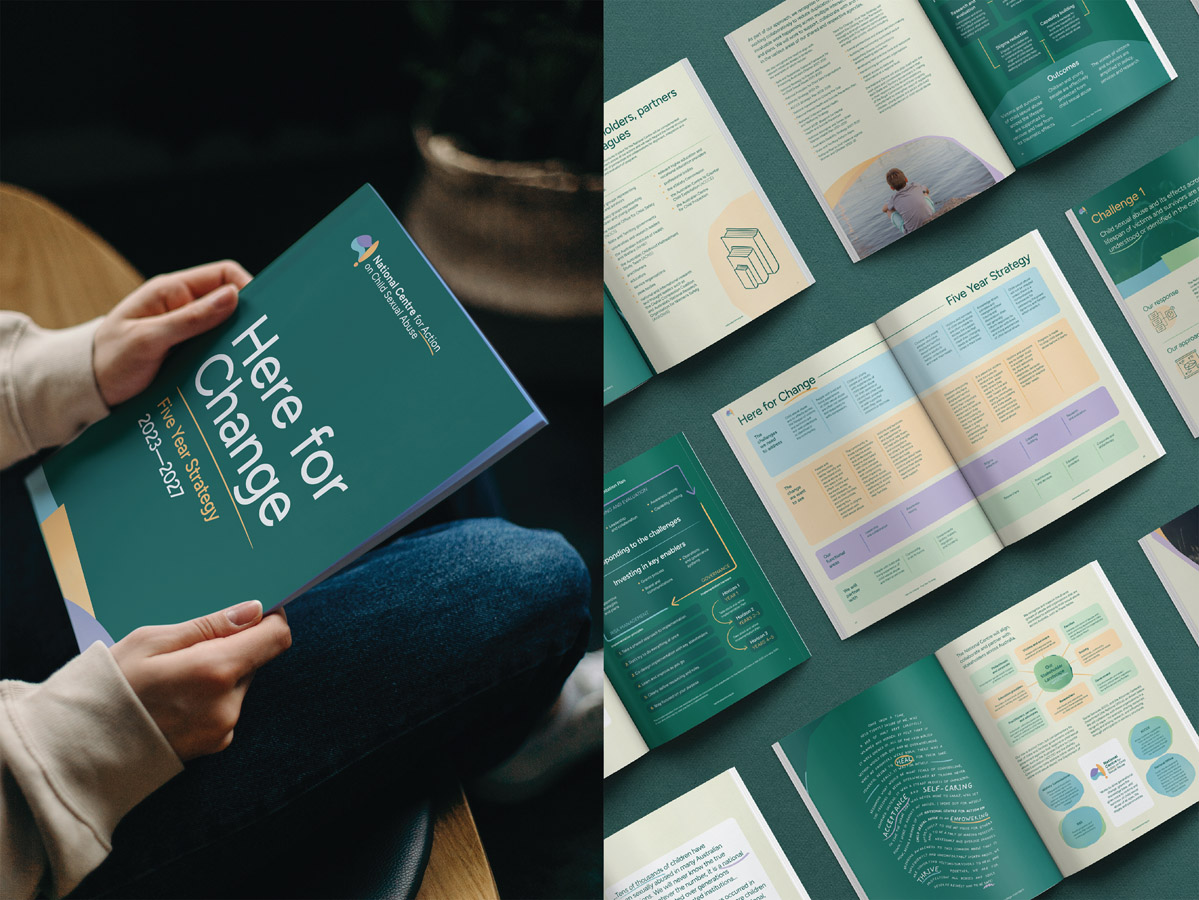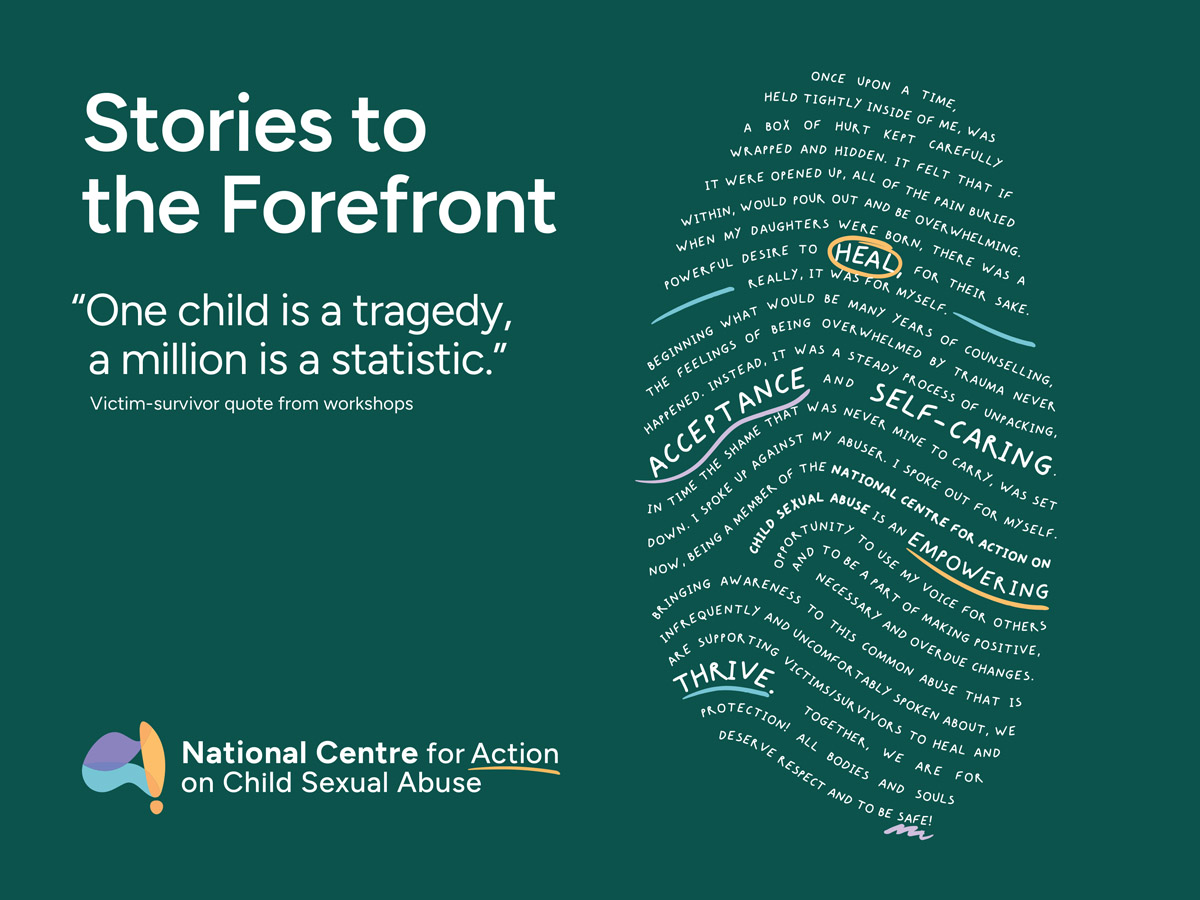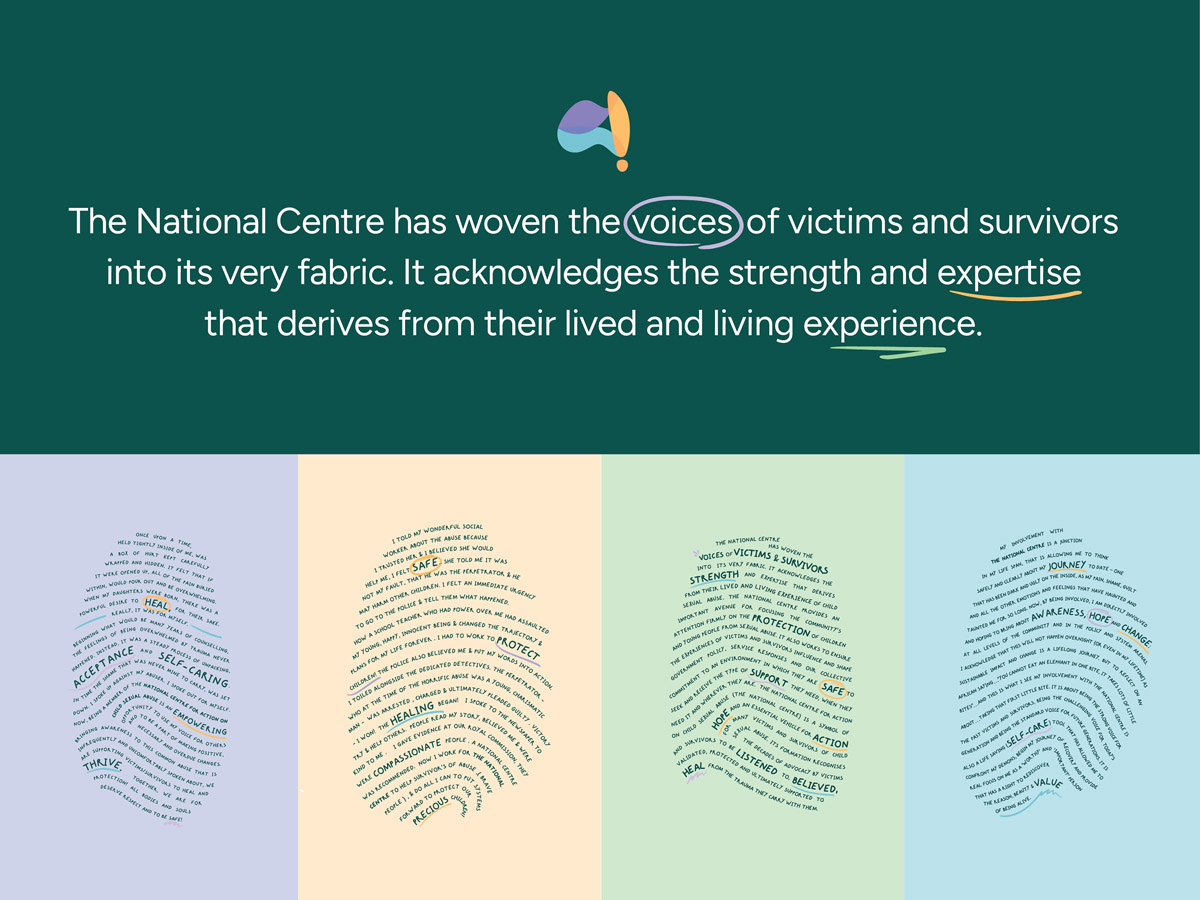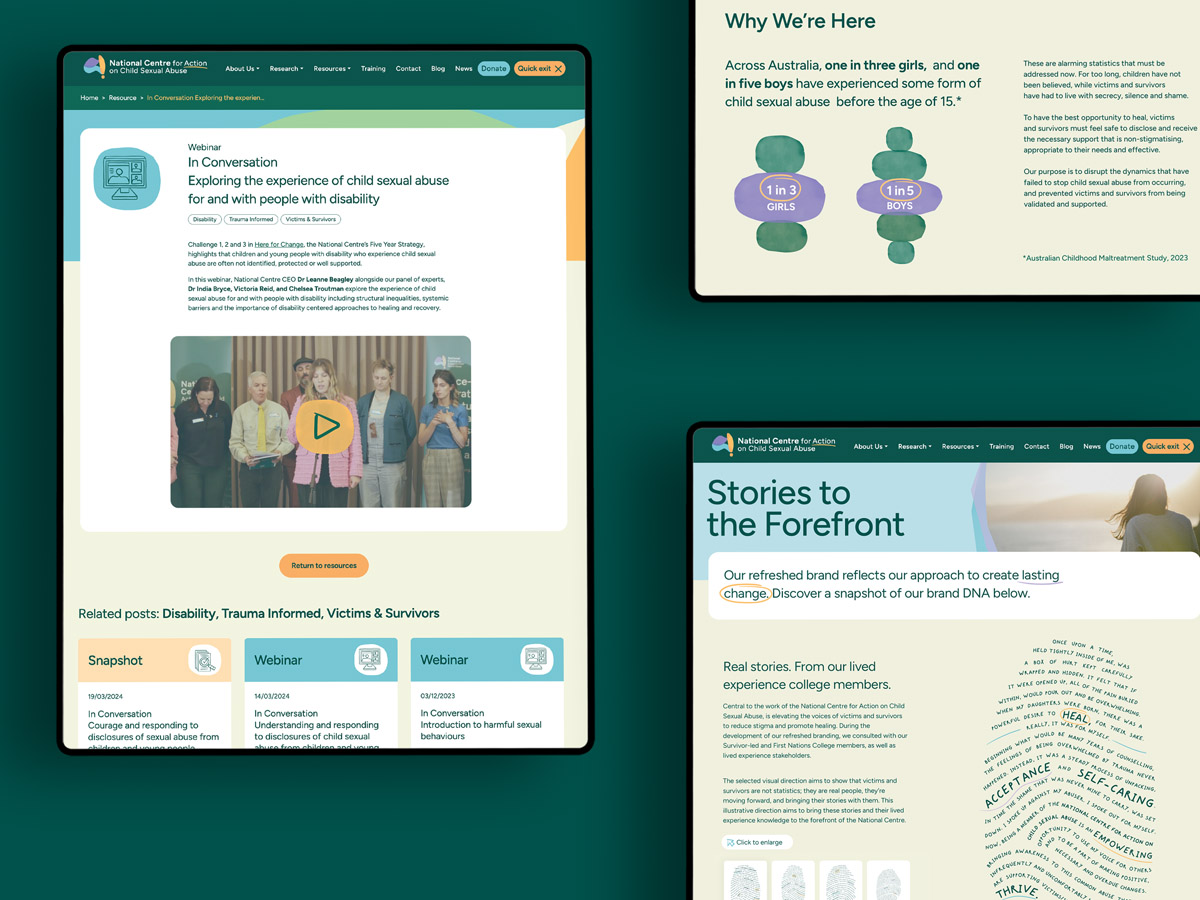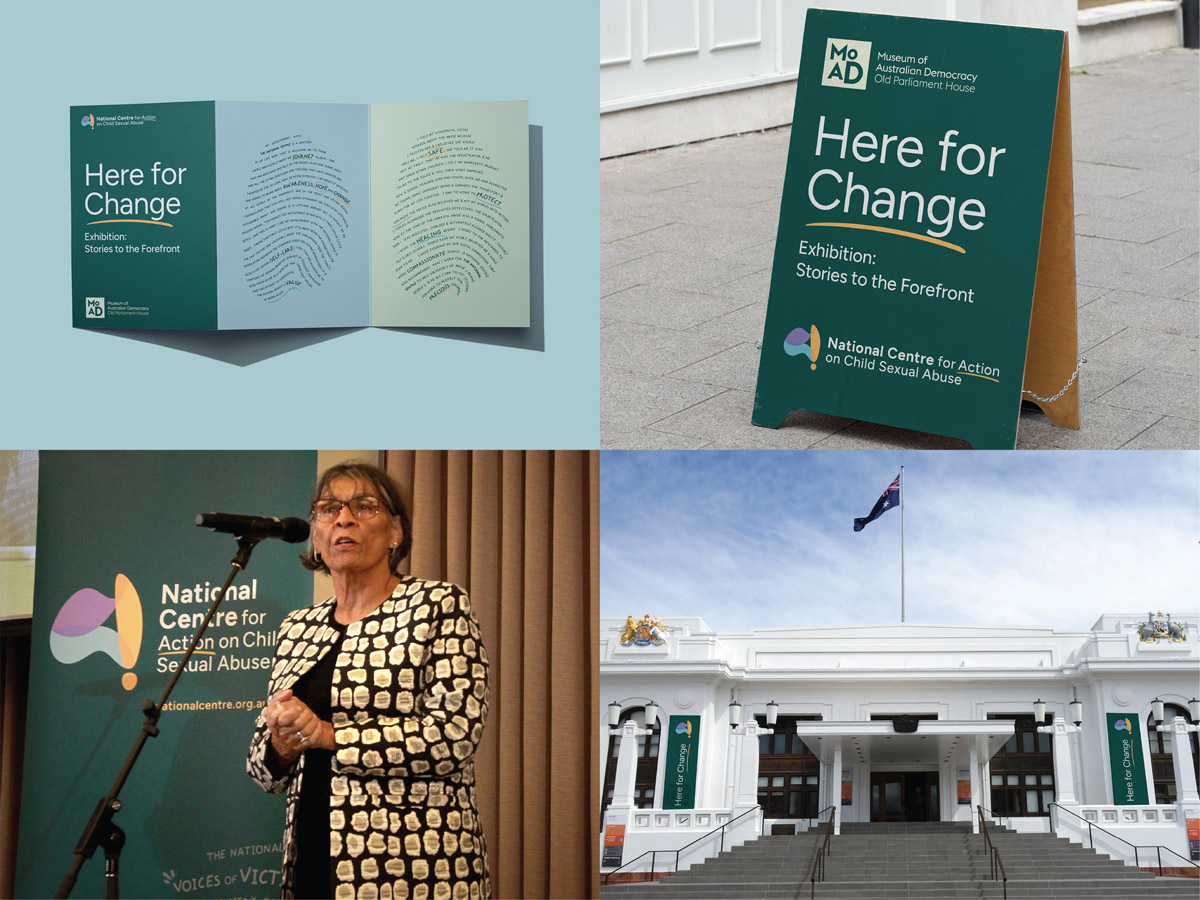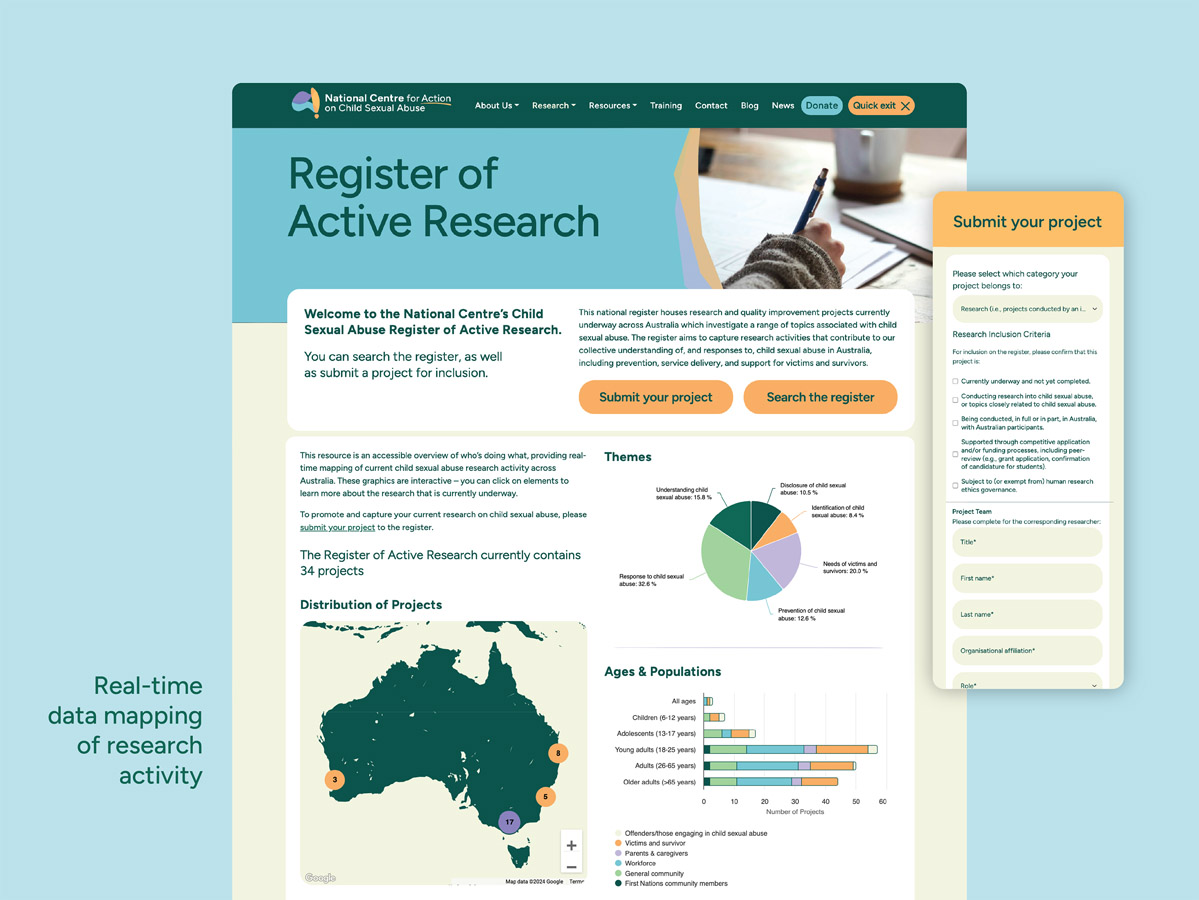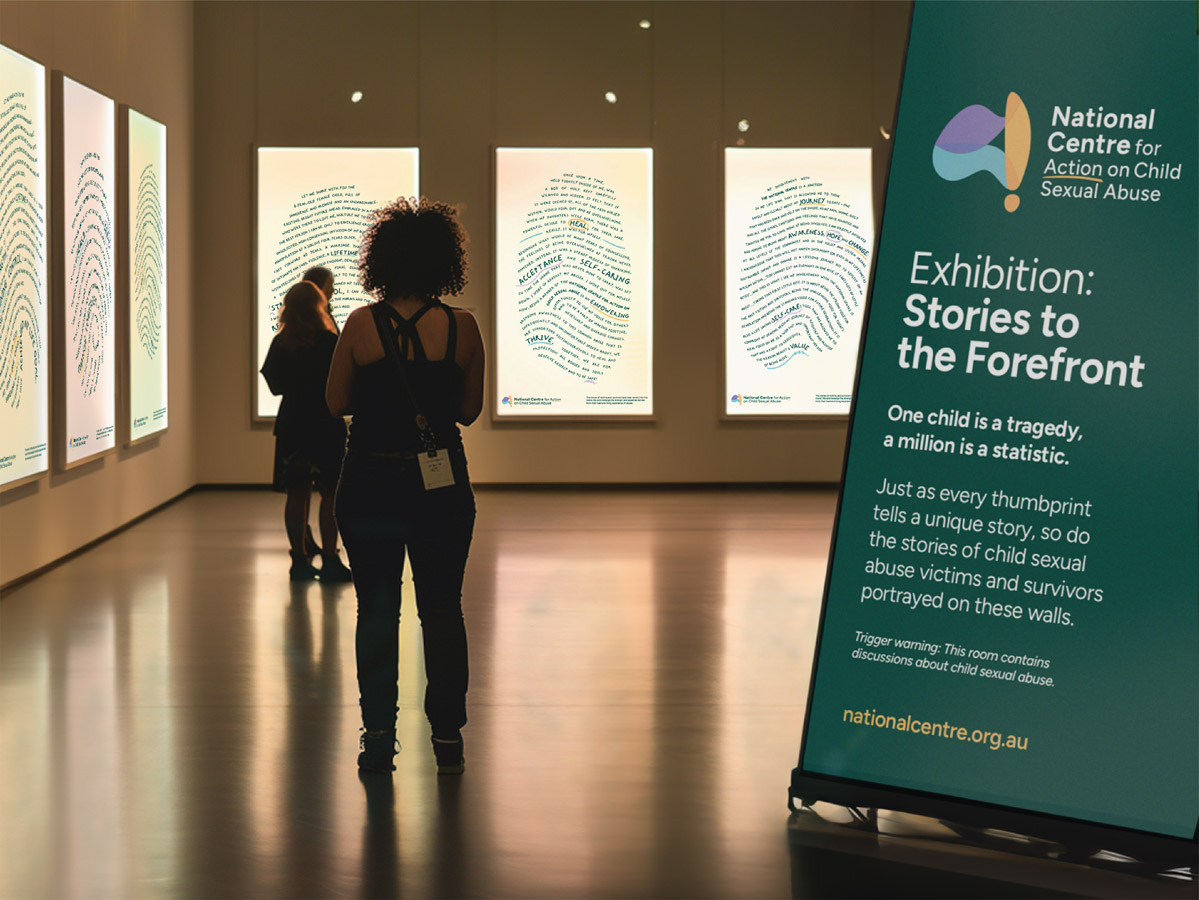This landmark co-design harnessed extensive research and data from the Royal Commission into Institutional Responses to Child Sexual Abuse, a 5-year inquiry. The inquiry involved handling over 42,041 calls, receiving 25,964 letters and emails, conducting 8,013 private sessions, and making 2,575 referrals to authorities. Through document analysis to reviewing reports, transcripts, and submissions, thematic analysis to uncover critical insights and recurring themes, and case study analysis to explore individual experiences in-depth, this initial research phase laid a purposeful foundation for the co-design process.
Our findings highlighted the sensitivity, complexity, and enduring impact of child sexual abuse on survivors. Recognising that the Royal Commission represented their first opportunity to share their stories for many victim-survivors, our workshops and co-design process were created with a delicate balance of empathy and empowerment.
We engaged 65+ individuals across Australia, including survivors, advocates, industry experts, government officials, policymakers, and professionals from various fields, alongside people of diverse ages and cultural backgrounds, including LGBTQI+, First Nations, and those with disabilities. Through co-design workshops and individual interviews, we ensured that their voices, insights and experiences directly informed the strategy in a trauma-informed environment with the National Centre team.
We identified a gap between strategy and creative outcomes in significant projects shaped by a Royal Commission. Enhancing the strategy and its results was key to honouring every individual who contributed to the Royal Commission and our research. Addressing this complex, multifaceted issue required a process tailored to meet the audience’s needs. This approach respected participants sharing their vulnerable stories while aiding creatives in translating research into strategy and tangible outcomes.
This process ensured that every element of the strategy balanced empathy, expertise, and organisational sustainability. The outcomes underwent extensive approval and qualitative testing, resulting in a brand that has been warmly embraced across Australia.

